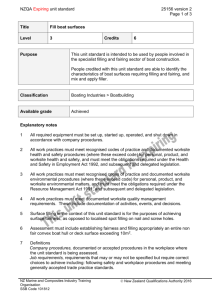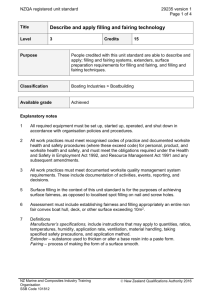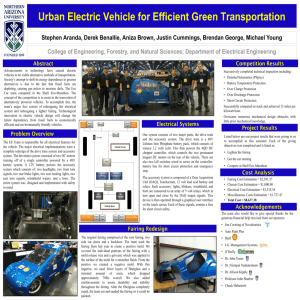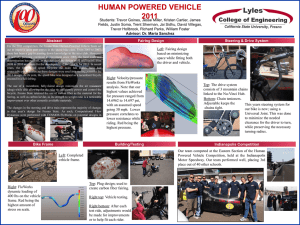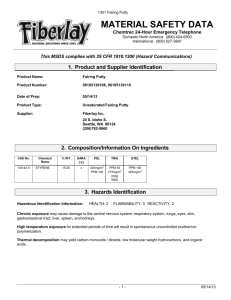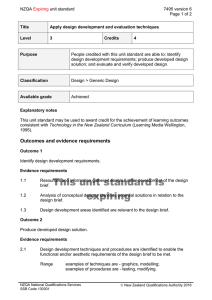NZQA unit standard 25113 version 2
advertisement
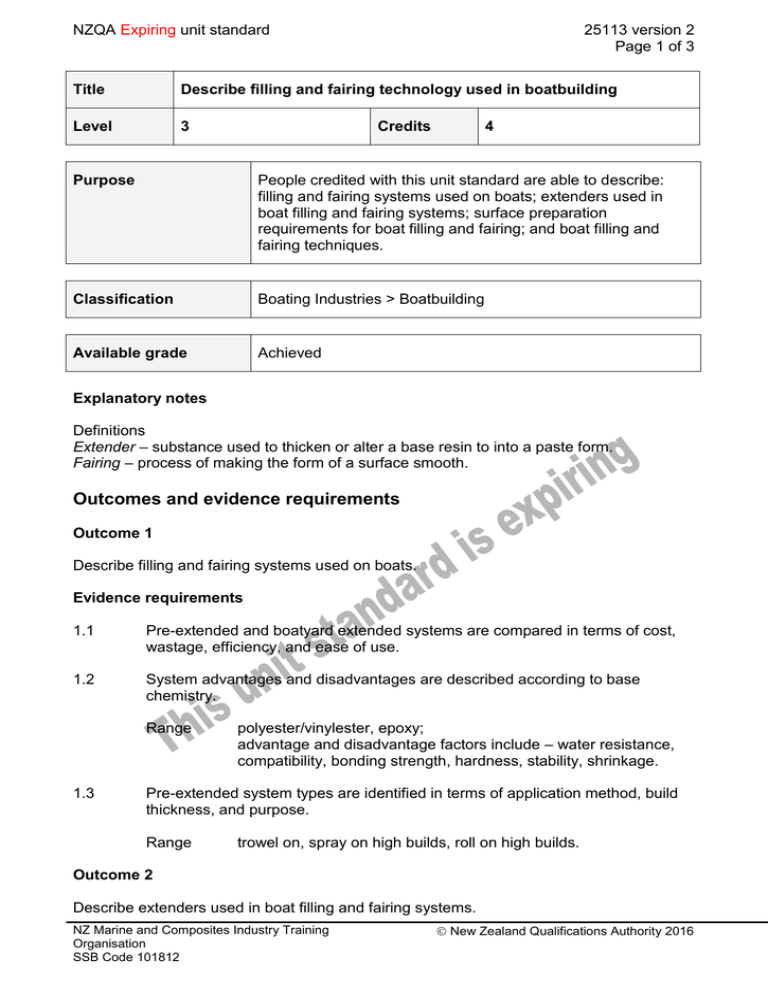
NZQA Expiring unit standard 25113 version 2 Page 1 of 3 Title Describe filling and fairing technology used in boatbuilding Level 3 Credits 4 Purpose People credited with this unit standard are able to describe: filling and fairing systems used on boats; extenders used in boat filling and fairing systems; surface preparation requirements for boat filling and fairing; and boat filling and fairing techniques. Classification Boating Industries > Boatbuilding Available grade Achieved Explanatory notes Definitions Extender – substance used to thicken or alter a base resin to into a paste form. Fairing – process of making the form of a surface smooth. Outcomes and evidence requirements Outcome 1 Describe filling and fairing systems used on boats. Evidence requirements 1.1 Pre-extended and boatyard extended systems are compared in terms of cost, wastage, efficiency, and ease of use. 1.2 System advantages and disadvantages are described according to base chemistry. Range 1.3 polyester/vinylester, epoxy; advantage and disadvantage factors include – water resistance, compatibility, bonding strength, hardness, stability, shrinkage. Pre-extended system types are identified in terms of application method, build thickness, and purpose. Range trowel on, spray on high builds, roll on high builds. Outcome 2 Describe extenders used in boat filling and fairing systems. NZ Marine and Composites Industry Training Organisation SSB Code 101812 New Zealand Qualifications Authority 2016 NZQA Expiring unit standard 25113 version 2 Page 2 of 3 Evidence requirements 2.1 Extenders are described in terms of their advantages and disadvantages when mixed into a filling or fairing compound. Range extenders may include – talc, silica, micro-balloons; advantage and disadvantage factors include – shaping, sanding, hardness, stability, mixing, cost, application. Outcome 3 Describe surface preparation requirements for boat filling and fairing. Evidence requirements 3.1 Surface preparation and cleaning requirements prior to application of filling or fairing compound are described according to medium. Range 3.2 steel, aluminium, composite, timber. Surface preparation requirements are described in terms of identification and marking out of highs and lows. Outcome 4 Describe boat filling and fairing techniques. Evidence requirements 4.1 Use of battens is described in terms of establishing fair surfaces. Range 4.2 Use of shaping and smoothing tools is described in terms of establishing fair and smooth surfaces. Range 4.3 batten length and stiffness, batten selection according to surface curvature, localised fairness, overall fairness, marking out. includes planes, sanding boards, sanding machines. The stages of filler application are described in terms of the progression of the fairing process. Range initial fairing application, localised application. This unit standard is expiring. Assessment against the standard must take place by the last date for assessment set out below. NZ Marine and Composites Industry Training Organisation SSB Code 101812 New Zealand Qualifications Authority 2016 NZQA Expiring unit standard Replacement information 25113 version 2 Page 3 of 3 This unit standard, unit standard 25155, and unit standard 25156 have been replaced by unit standard 29235. Status information and last date for assessment for superseded versions Process Version Date Last Date for Assessment Registration 1 21 November 2008 31 December 2018 Review 2 15 October 2015 31 December 2018 Consent and Moderation Requirements (CMR) reference 0136 This CMR can be accessed at http://www.nzqa.govt.nz/framework/search/index.do. Please note Providers must be granted consent to assess against standards (accredited) by NZQA, before they can report credits from assessment against unit standards or deliver courses of study leading to that assessment. Industry Training Organisations must be granted consent to assess against standards by NZQA before they can register credits from assessment against unit standards. Providers and Industry Training Organisations, which have been granted consent and which are assessing against unit standards must engage with the moderation system that applies to those standards. Requirements for consent to assess and an outline of the moderation system that applies to this standard are outlined in the CMR. The CMR also includes useful information about special requirements for organisations wishing to develop education and training programmes, such as minimum qualifications for tutors and assessors, and special resource requirements. NZ Marine and Composites Industry Training Organisation SSB Code 101812 New Zealand Qualifications Authority 2016
